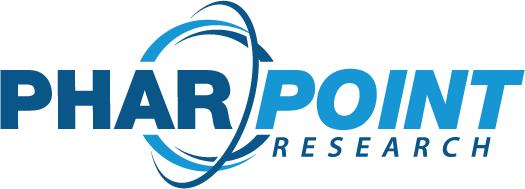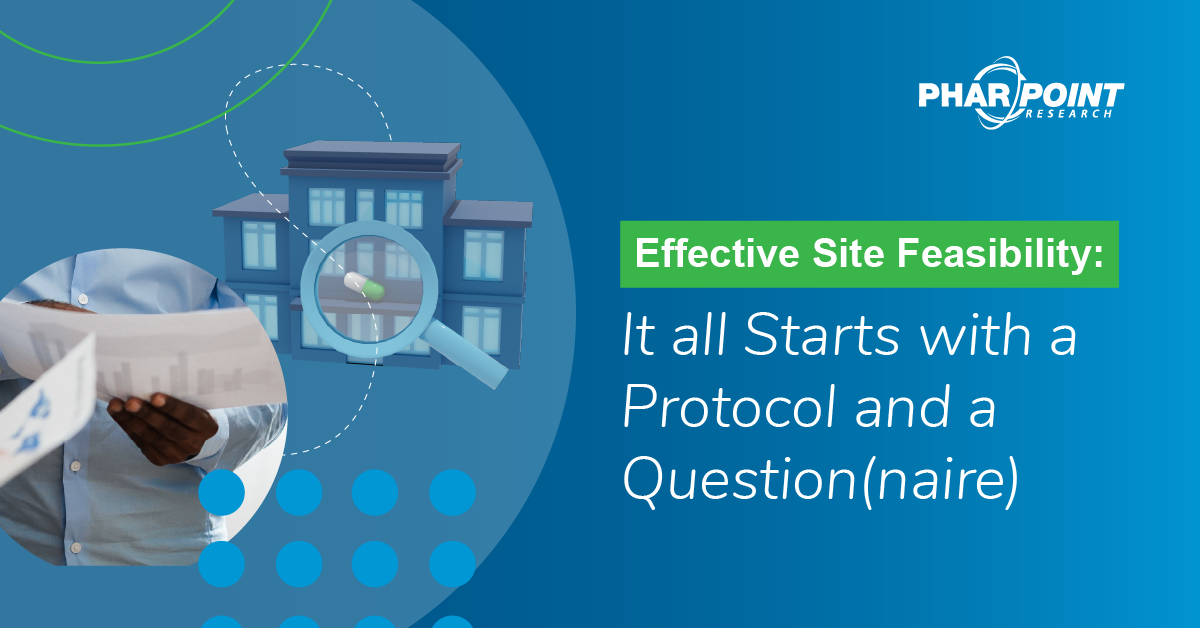What’s in Your Feasibility Questionnaire?
One of the early steps taken in the site qualification process is the creation of a well-designed feasibility questionnaire.
The data collected in this questionnaire guides site selection decisions. This, in turn, drives enrollment and is a pivotal factor in whether or not a study is able to bring in the right patients within a realistic timeline.
The most effective site feasibility questionnaires are:
- Focused, to respect the time and effort of site staff returning these documents, and
- Study-specific, to ensure a site’s realistic ability to identify and enroll the right participant population.
“We try to keep our feasibility questionnaires as concise as possible and prioritize adding in content based on the protocol,” PharPoint’s Feasibility Manager Kim Winspear explains. “For instance, adding in details based on inclusion/exclusion criteria.”
Consider Your Finalized Study Protocol
It is important to note that the strongest questionnaires – those which can most accurately reflect a sites true ability to support a trial – will be built off a full protocol, not just a synopsis.
In practice, this is sometimes a challenge, as it’s common for the site feasibility process to be initiated early in a clinical trial’s lifecycle, sometimes prior to protocol finalization.
For sponsors eager to begin but without a completed protocol, it may be worthwhile to engage a cross-functional team early to solidify key elements before beginning any site outreach.
This additional perspective can help mitigate the risk of downstream challenges or changes to protocol – changes which can, in some instances, impact a site’s ability to effectively participate in a trial.
With a full protocol in hand, sponsors and feasibility teams can:
- Select high performing sites by aligning criteria with actual study needs;
- Forecast enrollment timelines more accurately, as predictions are working off robust and accurate criteria; and,
- Create more precise study budgets, as site pass-throughs can be more accurately forecasted based on a comprehensive look at study details.
The Human Element: Relationships, Experience, and Nuance
Ultimately, a tailored, protocol-driven feasibility questionnaire is important, but only one piece of the puzzle.
No matter how comprehensive your data, successful site selection still hinges on interpretation. This is where the insight of an experienced site feasibility consultant can add irreplaceable value – spotting the gaps, reading between the lines, and weighing elements that a questionnaire alone may miss.
This could include considerations like:
- Established relationships: A team may have a well-vetted database of high-performing sites that bring an additional layer of reliability and trust to the data.
- Previous challenges: If a study team has previously noted substantial challenges with a site – perhaps in the form of low engagement, high screen fails, or repeat protocol deviations – additional conversation on the path forward may be warranted.
- Strategic fit: For instance, experienced teams can pinpoint when a smaller, lesser-known site with fewer competing trials and/or a faster startup process might actually be the stronger choice for enrollment success.
- Participant journey alignment: A site that looks ideal on paper may still present practical barriers for participants. For example, what’s a short walk across a medical campus for one trial could be a significant burden in studies involving participants with mobility challenges.
Conclusion
To truly set a trial up for enrollment success, you need both a structured, protocol-informed feasibility process and the nuance that comes from experience, context, and a deep understanding of a study’s unique needs.
If you’re interested in talking through site selection for an upcoming trial or learning more about how the PharPoint team approaches feasibility and site strategy, we’d love to connect.

